-
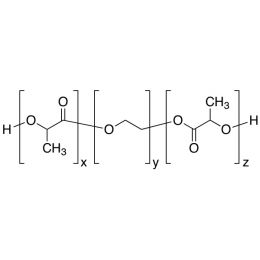 PLA(1000)-b-PEG(1000)-b-PLA(1000), Triblock PolymerCatalog Number 24500
PLA(1000)-b-PEG(1000)-b-PLA(1000), Triblock PolymerCatalog Number 24500Polymer structures featuring polyethylene glycol (PEG), with biodegradable or biocompatabile segments offering micelluar, nano and microsphere morphologies which are useful for controlled release formulations. Molecular weights of blocks controlled by GPC. Alternative structures can be synthesized.
-
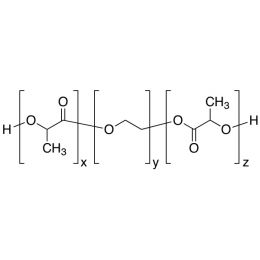 PLA(2000)-b-PEG(1000)-b-PLA(2000), Triblock PolymerCatalog Number 24501
PLA(2000)-b-PEG(1000)-b-PLA(2000), Triblock PolymerCatalog Number 24501Polymer structures featuring polyethylene glycol (PEG), with biodegradable or biocompatabile segments offering micelluar, nano and microsphere morphologies which are useful for controlled release formulations. Molecular weights of blocks controlled by GPC. Alternative structures can be synthesized.
-
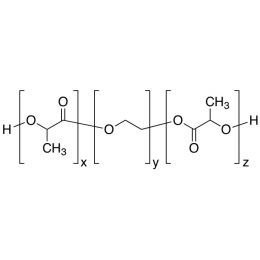 PLA(5000)-b-PEG(1000)-b-PLA(5000), Triblock PolymerCatalog Number 24502
PLA(5000)-b-PEG(1000)-b-PLA(5000), Triblock PolymerCatalog Number 24502Polymer structures featuring polyethylene glycol (PEG), with biodegradable or biocompatabile segments offering micelluar, nano and microsphere morphologies which are useful for controlled release formulations. Molecular weights of blocks controlled by GPC. Alternative structures can be synthesized.
-
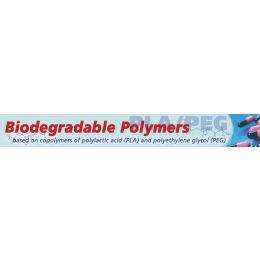 PLA(1000)-b-PEG(4000)-b-PLA(1000), Triblock PolymerCatalog Number 24503
PLA(1000)-b-PEG(4000)-b-PLA(1000), Triblock PolymerCatalog Number 24503Polymer structures featuring polyethylene glycol (PEG), with biodegradable or biocompatabile segments offering micelluar, nano and microsphere morphologies which are useful for controlled release formulations. Molecular weights of blocks controlled by GPC. Alternative structures can be synthesized.
A new class of polymeric biomaterials is emerging. The biodegradability of polymers based on lactic acid(LA) and its copolymers with ethylene glycol (EG) opens up new avenues for drug delivery, gene therapy, tissue engineering and determination of cellular pathway mechanisms.
-
 PLA(1000)-b-PEG(10,000)-b-PLA(1000), Triblock PolymerCatalog Number 24509
PLA(1000)-b-PEG(10,000)-b-PLA(1000), Triblock PolymerCatalog Number 24509Polymer structures featuring polyethylene glycol (PEG), with biodegradable or biocompatabile segments offering micelluar, nano and microsphere morphologies which are useful for controlled release formulations. Molecular weights of blocks controlled by GPC. Alternative structures can be synthesized.
A new class of polymeric biomaterials is emerging. The biodegradability of polymers based on lactic acid(LA) and its copolymers with ethylene glycol (EG) opens up new avenues for drug delivery, gene therapy, tissue engineering and determination of cellular pathway mechanisms.
-
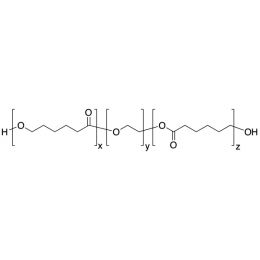 PLA(5,000)-b-PEG(10,000)-b-PLA(5,000), Triblock PolymerCatalog Number 25026
PLA(5,000)-b-PEG(10,000)-b-PLA(5,000), Triblock PolymerCatalog Number 25026Polymer structures featuring polyethylene glycol (PEG), with biodegradable or biocompatabile segments offering micelluar, nano and microsphere morphologies which are useful for controlled release formulations. Molecular weights of blocks controlled by GPC. Alternative structures can be synthesized.
A new class of polymeric biomaterials is emerging. The biodegradability of polymers based on lactic acid(LA) and its copolymers with ethylene glycol (EG) opens up new avenues for drug delivery, gene therapy, tissue engineering and determination of cellular pathway mechanisms.
-
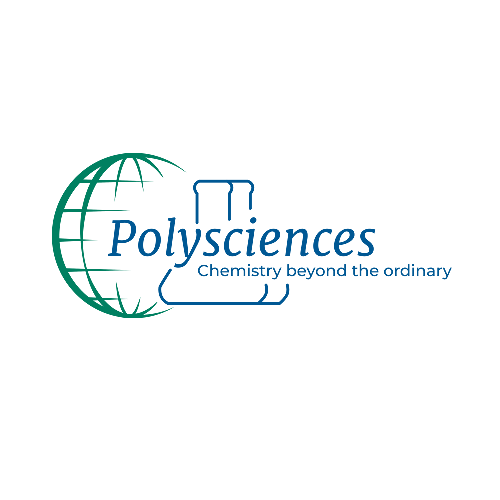 PLA(10,000)-b-PEG(10,000)-b-PLA(10,000), Triblock PolymerCatalog Number 25027
PLA(10,000)-b-PEG(10,000)-b-PLA(10,000), Triblock PolymerCatalog Number 25027Polymer structures featuring polyethylene glycol (PEG), with biodegradable or biocompatabile segments offering micelluar, nano and microsphere morphologies which are useful for controlled release formulations. Molecular weights of blocks controlled by GPC. Alternative structures can be synthesized.
Polylactic Acid & Polyethylene Glycol Triblock Polymers
